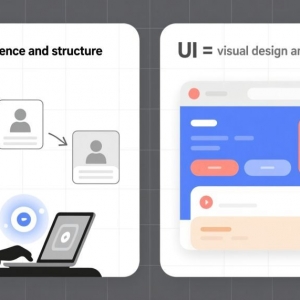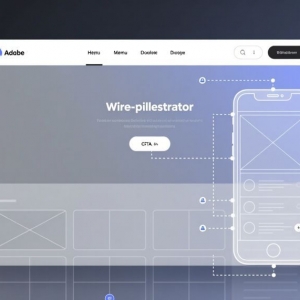For potential clients, a law firm’s website is often their first introduction to the practice. In those brief seconds, they decide whether the firm feels professional and capable. Investing in expert web design services is crucial to make those moments count. This article explores the design practices that create effective law firm websites, emphasizing clarity, trust, and usability over fleeting digital trends.
First Impressions Shape Perceptions
Visitors to a law firm’s website are often navigating serious issues—family disputes, legal charges, or estate concerns. They don’t need flashy graphics or complex designs. They want a sense of reliability and competence. A talented web designer achieves this with clean layouts, clear fonts, and a professional color palette.
A website is like a firm’s reception area: an organized, welcoming space instills confidence, while a chaotic one repels visitors. Web design services that focus on simplicity ensure the site conveys professionalism from the start.
Make Navigation Effortless
Law firms often cover multiple practice areas, from criminal defense to corporate law. Cramming everything onto the homepage creates confusion. A web designer’s skill lies in structuring content so users can find what they need quickly.
A streamlined menu with clear labels—like “Divorce Law” or “Business Disputes”—guides visitors efficiently. The goal is to get them to the right page in one or two clicks. Web design services that simplify navigation make complex firms feel accessible.
Use Plain Language
Legal terminology can intimidate clients. A website’s design includes its content, and a web designer ensures text is relatable. Instead of phrases like “assistance with civil litigation,” use “we handle lawsuits and disputes.” Clear language builds trust.
This applies to blogs or resource sections as well. Legal updates should use simple terms to explain complex topics. Web design services that prioritize clear communication demonstrate expertise while making clients feel understood.
Optimize for Mobile Users
Most people now browse law firm websites on their phones. A site that’s hard to navigate on mobile—whether due to small text or broken buttons—loses visitors. Web design services must focus on mobile-first design, ensuring fast load times and intuitive layouts on smaller screens.
Mobile users prefer concise content. Long text blocks can overwhelm phone screens, so a web designer uses short, scannable sections. Neglecting mobile optimization means missing out on a large portion of potential clients.
Highlight the People
Clients connect with individuals, not just brands. A website without attorney photos or bios feels cold. A web designer integrates professional headshots and short bios that balance expertise with personality, making the firm more relatable.
Brief introductions work better than long credential lists. Some firms add short videos, which a web designer can embed to showcase attorneys’ approachability. These human elements make the site feel warm and trustworthy.
Streamline Contact Processes
A law firm website aims to convert visitors into clients. If contact details are hard to find, that goal fails. A web designer ensures phone numbers, emails, and forms are prominent, with clear calls to action like “Get in Touch” or “Call Today.”
Design touches, like a sticky “Contact Us” button on mobile, can boost conversions. Clients seeking legal help act quickly, and web design services that simplify contact options capture more leads.
Prove Credibility Carefully
Clients want evidence they’re choosing the right firm. Testimonials, ethical case results, and affiliations like bar memberships provide this, but presentation is key. A web designer uses short quotes or anonymized case studies to highlight success without clutter.
Badges for awards or memberships should be neatly integrated, avoiding an overly promotional feel. Web design services that balance these elements build credibility while keeping the design professional.
Focus on Speed and Security
A slow website feels unreliable, and an insecure one feels unsafe. Law firms handle sensitive information, so security features like SSL certificates are critical. A web designer optimizes performance by avoiding heavy images or bloated code.
Speed also affects search engine rankings, impacting visibility. Web design services that deliver fast, secure sites ensure the firm remains accessible and reliable to potential clients.
Build for Easy Updates
A law firm’s website must stay current as services or staff change. A web designer should use platforms like WordPress, enabling non-technical staff to update content. This reduces reliance on web design services for routine changes.
Fresh content, like recent blog posts, shows the firm is active. A stale site suggests neglect, deterring clients. A well-designed site balances immediate impact with long-term flexibility.
Conclusion
A law firm’s website is a powerful tool for building trust and attracting clients. Effective web design services create sites that are clear, secure, and approachable, guiding visitors from discovery to contact. A skilled web designer ensures the site reflects the firm’s professionalism, turning clicks into clients.











